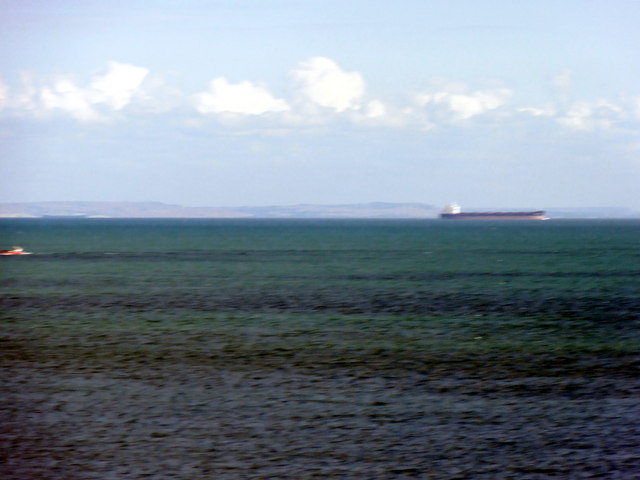Waterway
|
Taken from Saxon Shore way, this view over the Strait of Dover includes the French coast near Calais, which is visible in the distance. |
Contents |
[edit] Introduction
The International Levee Handbook, published by CIRIA in 2013, defines a waterway as: ‘A navigable channel.’
[edit] History
The use of waterways as a navigational tool goes back to prehistoric times. They were essential for the transport of people and goods, and the development of early civilisations depended on waterways for military purposes.
It is believed that the Ancient Egyptians were the first civilisation to use maritime vessels, followed by the Phoenicians, Greeks and Romans.
During the Industrial Revolution, artificial waterways in the United Kingdom were an essential part of the country’s commercial development. The canal network supported the growth of wealth and industry during the Victorian era and served to finance the rise of the British Empire.
[edit]
There are many different types of waterways that are navigable. This can include oceans, seas, canals, estuaries, lakes, some streams, rivers, creeks, gullies, washes and so on.
Waterways can be defined as being navigable based on a range of factors:
- Depth. Must be suitable for designated vessels.
- Width. Must have sufficient width to accommodate the beam of approved waterway traffic.
- Accessibility. Must not have obstructions or obstacles that could impede access.
- Current. The natural current of the waterway must not hinder the flow of traffic.
- Wave crest. The average height of waves must not be hazardous to vessels.
In the United States, the definition of the term 'navigable' is dictated by U.S. law. Navigable waterways are used for commercial purposes and are solely meant to transport people and goods. Their oversight is handled by the federal government which can dictate every aspect of navigable waterway usage. This includes who uses the waterways, how the waterways are used and if (and when) the waterways need to be altered.
[edit] Maritime waterways
There are maritime shipping routes (also referred to as sea lanes, sea roads, sea routes or shipping lanes) for large seagoing ships. Oceans, seas and large lakes are the most common types of maritime waterways.
Maritime waterways are generally served by seaports that are sometimes situated inland but are positioned in such a way as to make it possible for large vessels to access them.
The Strait of Dover between the UK and France is the busiest maritime waterway in the world.
[edit] Inland waterways
In 1953, The European Conference of Ministers of Transport established a classification of inland waterways that has been modified to address the development of push-towing. Inland waterways may also be referred to as inland water transport (IWT) systems.
Natural inland waterways include rivers, streams, small lakes and so on. Artificially made inland waterways include canals, locks and navigable aqueducts.
Inland waterways have some disadvantages:
- Availability. There are not numerous inland waterways around the world that are safely navigable.
- Restricted speed. Waterway transport is a slow process (compared to land or air transport). This is even slower in inland waterways.
- Navigation flexibility. Inland waterways have fixed points that are generally not subject to change. Land and air transport can usually be shifted, if necessary.
- Seasonal fluctuations. Extreme weather conditions can have a significant impact on inland waterways. Freezing conditions or droughts can render these waterways impassible.
- Safety. There may be weather related situations where crew members , passengers and goods could be at risk due to unpredictably rough conditions or cold weather.
[edit] Related articles on Designing Buildings Wiki
Featured articles and news
The UK's Modern Industrial Strategy: A 10 year plan
Previous consultation criticism, current key elements and general support with some persisting reservations.
Building Safety Regulator reforms
New roles, new staff and a new fast track service pave the way for a single construction regulator.
Architectural Technologist CPDs and Communications
CIAT CPD… and how you can do it!
Cooling centres and cool spaces
Managing extreme heat in cities by directing the public to places for heat stress relief and water sources.
Winter gardens: A brief history and warm variations
Extending the season with glass in different forms and terms.
Restoring Great Yarmouth's Winter Gardens
Transforming one of the least sustainable constructions imaginable.
Construction Skills Mission Board launch sector drive
Newly formed government and industry collaboration set strategy for recruiting an additional 100,000 construction workers a year.
New Architects Code comes into effect in September 2025
ARB Architects Code of Conduct and Practice available with ongoing consultation regarding guidance.
Welsh Skills Body (Medr) launches ambitious plan
The new skills body brings together funding and regulation of tertiary education and research for the devolved nation.
Paul Gandy FCIOB announced as next CIOB President
Former Tilbury Douglas CEO takes helm.
UK Infrastructure: A 10 Year Strategy. In brief with reactions
With the National Infrastructure and Service Transformation Authority (NISTA).
Ebenezer Howard: inventor of the garden city. Book review.
The Grenfell Tower fire, eight years on
A time to pause and reflect as Dubai tower block fire reported just before anniversary.
Airtightness Topic Guide BSRIA TG 27/2025
Explaining the basics of airtightness, what it is, why it's important, when it's required and how it's carried out.
Construction contract awards hit lowest point of 2025
Plummeting for second consecutive month, intensifying concerns for housing and infrastructure goals.
Understanding Mental Health in the Built Environment 2025
Examining the state of mental health in construction, shedding light on levels of stress, anxiety and depression.
The benefits of engaging with insulation manufacturers
When considering ground floor constructions.
Lighting Industry endorses Blueprint for Electrification
The Lighting Industry Association fully supports the ECA Blueprint as a timely, urgent call to action.
























